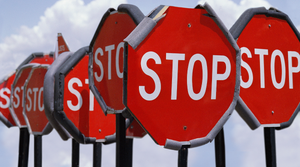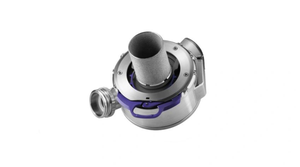Princeton Study Shows Effect of Bacteria on Medical Devices
March 4, 2013
Over 40 hours, bacterial cells (green) flowed through a channel, forming a green biofilm on the walls. Over the next 10 hours, researchers sent red bacterial cells through the channel. The red cells became stuck in the biofilm and began to form thin red streamers, which trapped additional cells, leading to rapid clogging. (Image source: Knut Drescher) |
A new study from Princeton University (Princeton, NJ) sheds light on how bacteria can clog medical devices. According to results from the study, microbes can join together to create biofilms that trap and entangle other nearby bacteria. This can lead to blockages, pressure differentials, and other serious problems in implanted medical devices. The study was published in the Proceedings of the National Academy of Sciences.
The researchers demonstrated that flow through soil-like porous materials, industrial filters, and medical stents dramatically modifies the morphology of Pseudomonas aeruginosa biofilms to form 3-D streamers. Over time, these streamers bridge the spaces between obstacles and corners in nonuniform environments.
For the study, researchers created time-lapse images of fluid flow in narrow pores or tubes that resemble those found in traditional medical devices. To add to the realism, they used rough surfaces with a pressure-driven fluid. Once these structures were created, the researchers introduced bacteria that commonly contaminate medical equipment and devices, discovering that the bacteria began to attach to the medical devices after 40 hours and form a biofilm. After 55 hours, string-like strands of this biofilm began to separate from the medical device, forming a net that caught additional bacterial cells. Over time, the net grew in size.
After 55 hours, the net began to block most fluid flow. After 56 hours, there was a complete blockage. Researchers are studying how certain materials and microstructures can impact the formation of biofilm strands. In addition, researchers at Princeton are analyzing bacterial genes to determine how they impact the formation of biofilm strands.
About the Author(s)
You May Also Like


